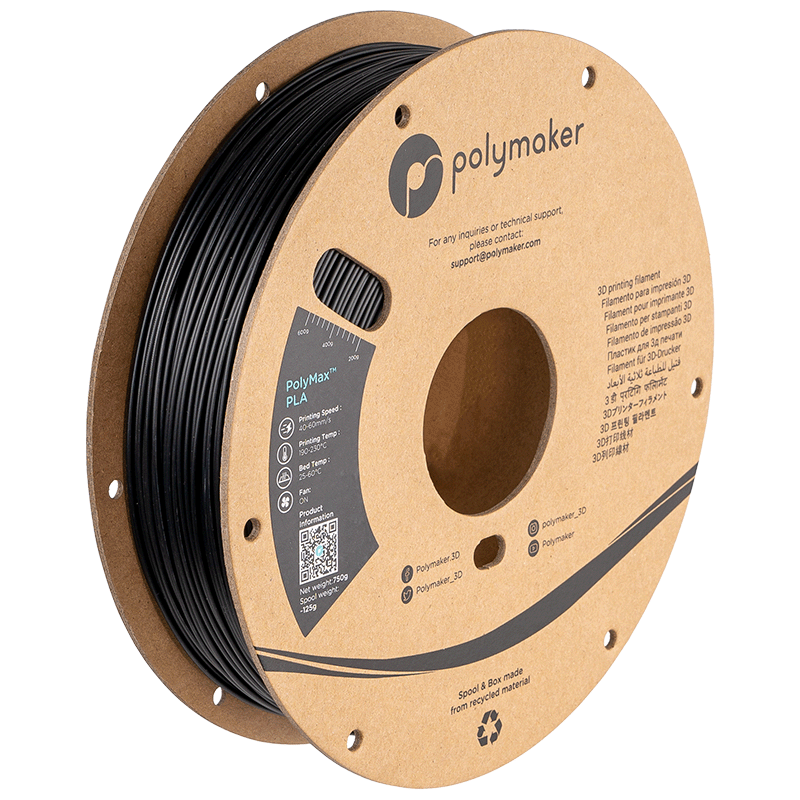
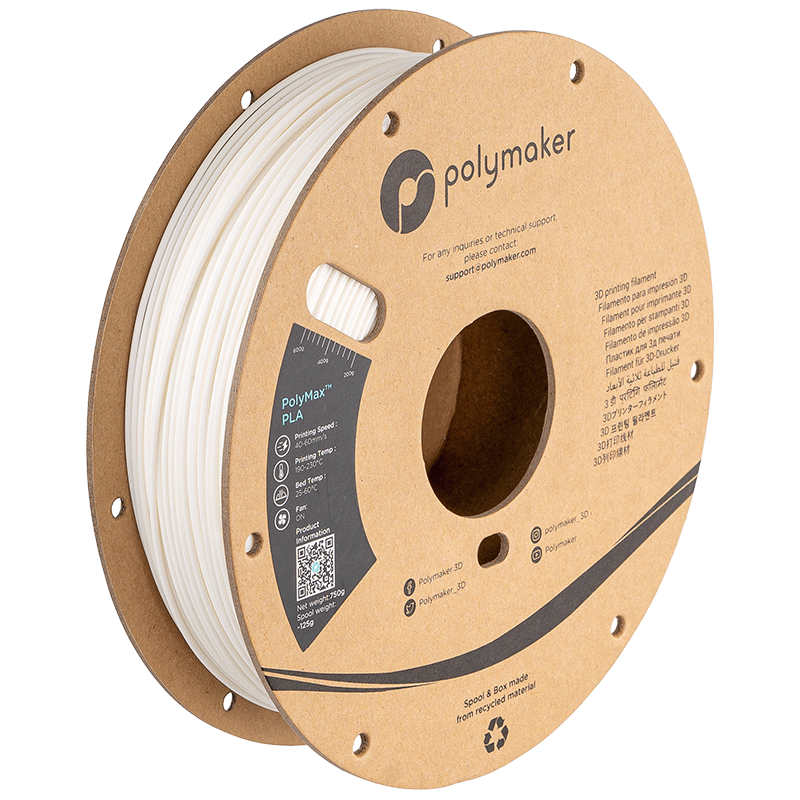
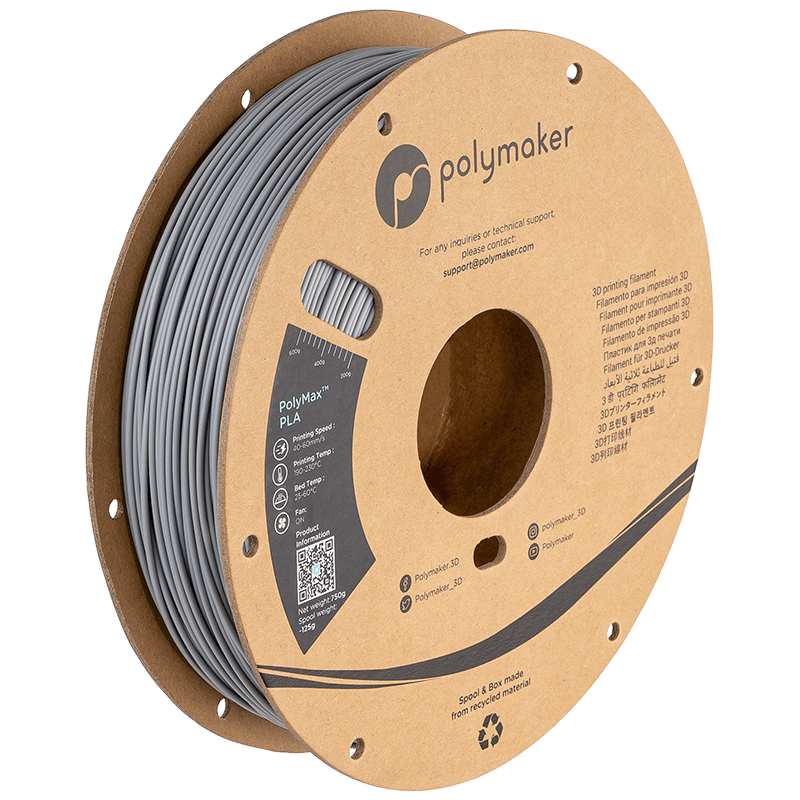
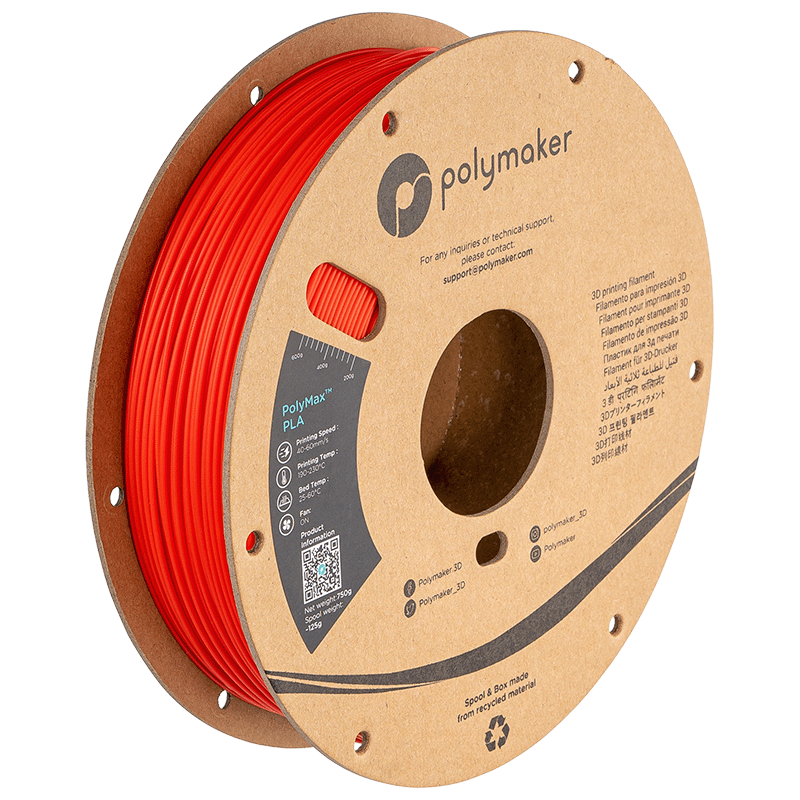
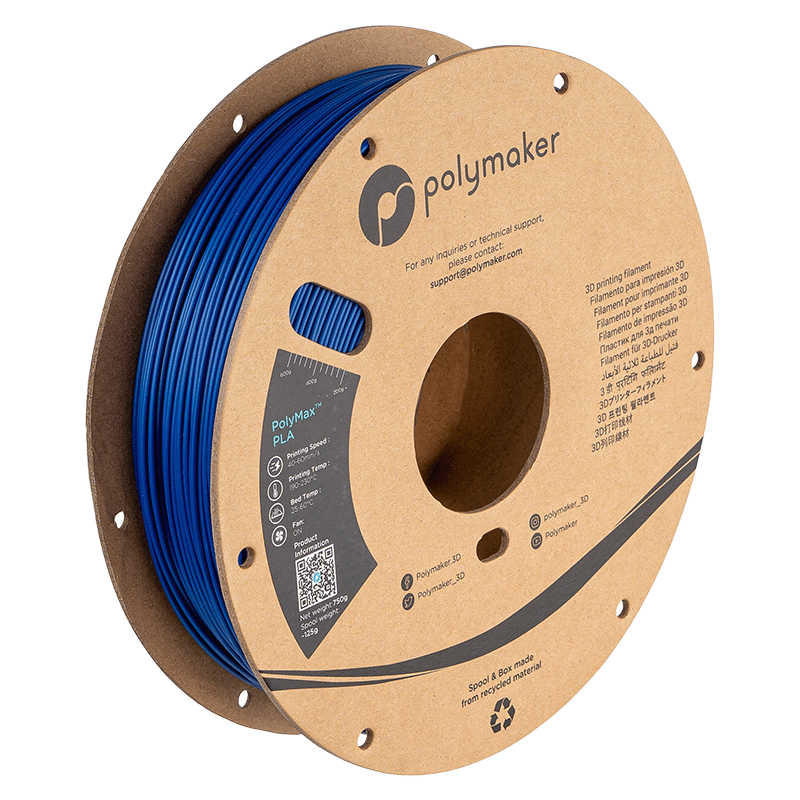
Polymaker
PolyMax PLA 1.75mm
PolyMax™ PLA is an incredibly easy-to-print filament with improved mechanical properties, making it an excellent alternative to ABS.
PRINTER SETTINGS:
- Nozzle temperature - 230 - 240 (°C)
- Build Surface material - BuildTak (recommended)
- Build plate temperature - 70 - 80 (°C)
- Cooling fan Turned - On
- Printing speed - 30 - 50 (mm/s)
- Raft separation distance - 0.15 – 0.2 (mm)
- Retraction distance - 1 -3 (mm)
- Retraction speed - 20 - 80 (mm/s)
- Recommended environmental temperature - 25 (°C)
- Threshold overhang angle - 70* (°)
NOTE:
The above settings are based on 0.4 mm nozzle and Simplify 3D v.3.1. Printing conditions may vary with different nozzle diameters.
TECHNOLOGIES
JAM-FREE™
Jam Free technology improves the heat stability of Polymaker’s PLA filaments with softening temperatures over 140 °C. As a result, Polymaker’s PLA filaments show minimal softening in the “cold end” and can melt rapidly once entering the heating zone, leading to excellent printing quality with zero risk of nozzle jams.
WARP-FREE™
Warp-Free™ technology enables the production of Nylon-based filaments that can be 3D printed with excellent dimensional stability and near-zero warpage. This is achieved by the fine control of micro-structure and crystallization behaviour of Nylon, which enables the material to fully release the internal stress before solidification.
ASH-FREE™
Ash-Free™ technology allows Polymaker’s filament which has been designed for investment casting to burn off cleanly without any residue, enabling defect-free metal parts. 3D printing has been used to produce investment casting patterns as it cuts down both the cost and lead time for small-volume production runs.
LAYER-FREE™
Layer-Free™ technology involves exposing a 3D printed part to an aerosol of micro-sized alcohol droplets, generated by a rapidly vibrating, perforated membrane called the nebulizer. The aerosol will then be adsorbed by the surface of the 3D printed part and render it smooth and layer-free.
NANO-REINFORCEMENT
Nano-reinforcement technology is applied to produce filaments with excellent mechanical properties and printing quality. It dramatically improves the toughness of the material by increasing its impact resistance.
STABILIZED FOAMING™
Stabilized Foaming™ technology is used to produce foamed filaments, whose foam structure can survive the printing process and be inherited by the printed parts. This enables light weight 3D printed parts with unprecedented surface finish.
Together, Layer by Layer!

